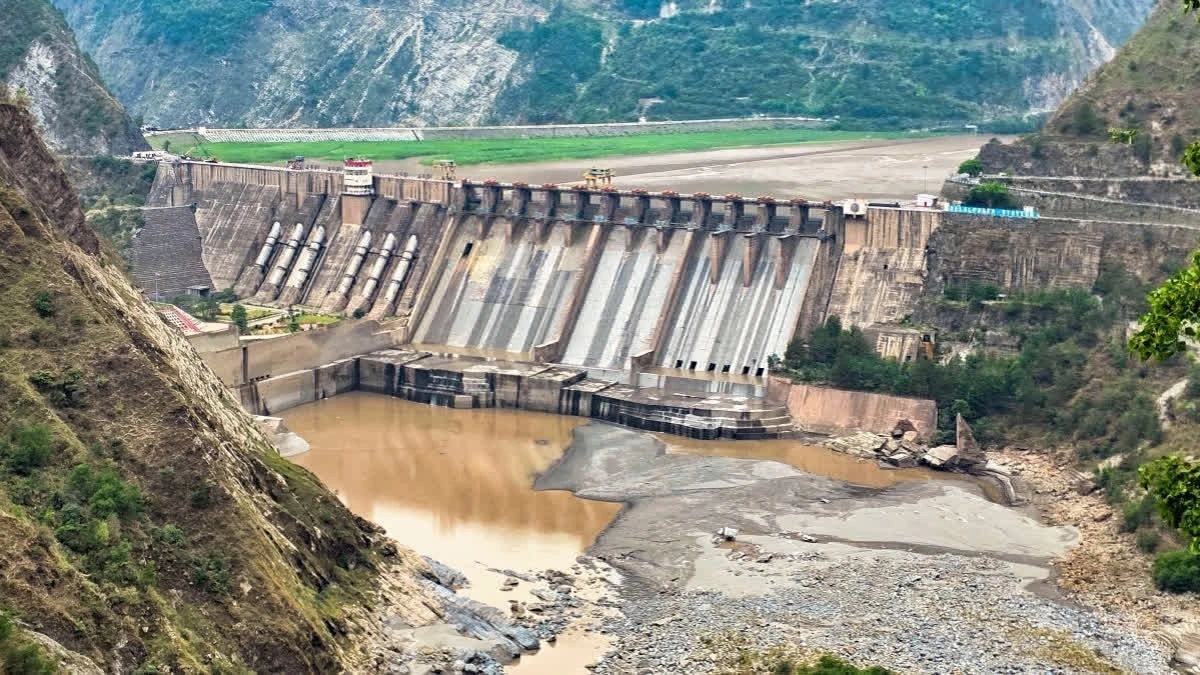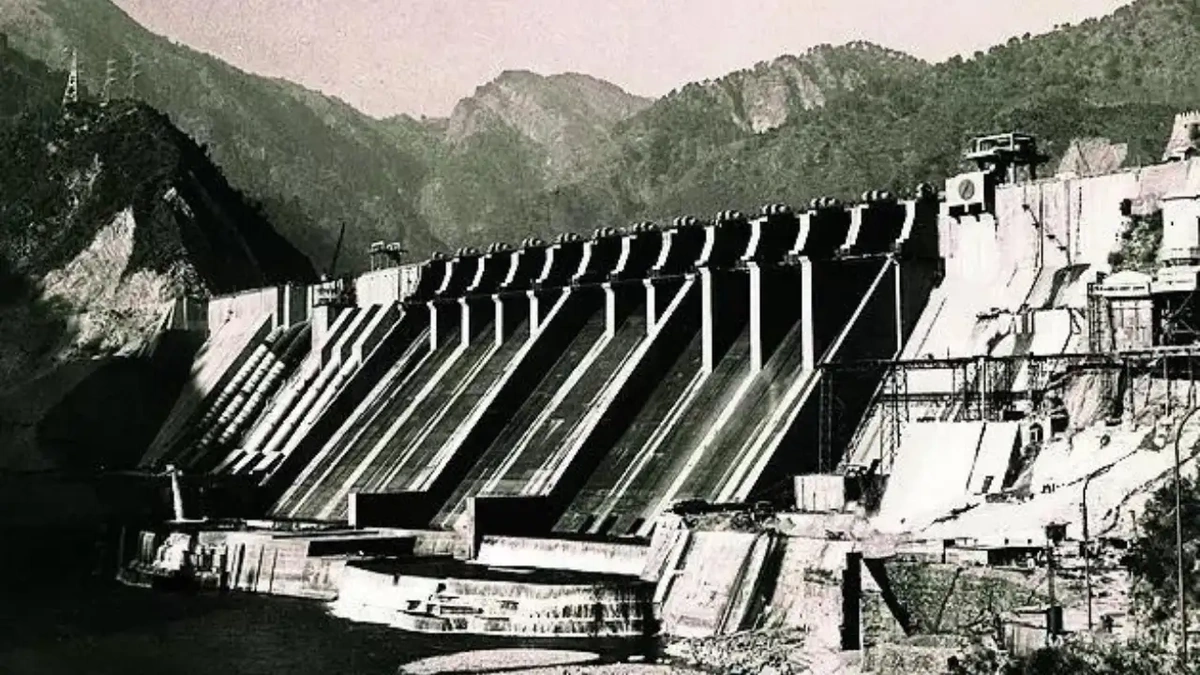Sawalkote Project on Chenab River Approved Amid Indus Waters Treaty Pause | Delhi News
Okay, so here’s the thing. The Sawalkote project – a hydroelectric power plant slated for the Chenab River in Jammu and Kashmir – just got the green light. You might be thinking, “Okay, cool, more power.” But trust me, there’s a lot more to unpack here, especially with the Indus Waters Treaty in the background. It’s not just about electricity; it’s about geopolitics, water rights, and the future of Indo-Pak relations.
Why the Sawalkote Project Matters – More Than Just Megawatts

Let’s be honest, India needs power. We’re a growing economy, and our energy demands are skyrocketing. Hydroelectric projects like Sawalkote are seen as a clean, renewable source to help meet that demand. But here’s where it gets interesting. The Chenab River is part of the Indus basin, and the Indus Waters Treaty (IWT) ,a landmark agreement between India and Pakistan, governs how these waters are shared. This treaty, brokered by the World Bank way back in 1960, has somehow managed to survive wars and countless tensions between the two countries.
So, why the pause in IWT discussions? Well, Pakistan has raised concerns about the design of the Sawalkote project, arguing that it violates the treaty’s provisions regarding the flow of water. India, of course, maintains that the project is fully compliant. What fascinates me is that this isn’t just about technical specifications; it’s about trust – or rather, the lack thereof. The pause in discussions, while not a full-blown crisis, definitely adds another layer of complexity to an already delicate situation.
Navigating the Indus Waters Treaty | A Tightrope Walk
The IWT is a pretty comprehensive document, laying out specific rules for how India and Pakistan can use the waters of the Indus and its tributaries. India is allowed to use the western rivers (Indus, Chenab, and Jhelum) for irrigation, power generation, and domestic use, but with restrictions to prevent any significant impact on the flow of water to Pakistan. Pakistan, on the other hand, has raised objections to several Indian hydroelectric projects, claiming they violate these restrictions.
The Chenab River basin is crucial for both nations, and any project on it is bound to attract scrutiny. The Sawalkote project is designed as a run-of-the-river scheme, meaning it doesn’t involve large-scale water storage. This is meant to minimize any impact on the downstream flow. But, and this is a big but, Pakistan remains skeptical. They fear that even a run-of-the-river project could be used to manipulate water flows, especially during times of tension.
The Environmental Considerations | A Balancing Act
Beyond the geopolitical implications, there are also environmental considerations. Large-scale infrastructure projects can have significant impacts on the local ecosystem. The construction of dams and reservoirs can alter river flows, disrupt fish migration, and submerge forests and agricultural land. India needs to ensure that the Sawalkote project is implemented in a sustainable manner, minimizing any adverse environmental effects. That’s where the environmental impact assessment comes into play; it needs to be thorough, transparent, and actually listened to – not just a formality.
And speaking of transparency, the local communities need to be involved in the decision-making process. Displacement, loss of livelihoods, and changes to traditional ways of life are all potential consequences of such projects. It’s crucial that the affected people are consulted, compensated fairly, and given a voice in shaping the project’s future. A common mistake I see is when these voices are silenced – that’s when projects turn into problems.
Powering the Future | The Path Ahead for Sawalkote
So, what does the future hold for the Sawalkote project? Well, the approval is a significant step forward, but it’s not the finish line. India needs to address Pakistan’s concerns through dialogue and transparency. Showing that the project adheres to the IWT’s provisions is crucial to building trust. Simultaneously, India must prioritize environmental sustainability and the well-being of local communities.
Let me rephrase that for clarity: this isn’t just about building a power plant; it’s about building a sustainable future, fostering regional cooperation, and upholding international agreements. It’s a complex challenge, but one that India must navigate carefully. According to various reports on the Chenab River dispute, this is an ongoing challenge between the two nations. The one thing you absolutely must remember is that water is life, and how we manage it will define our future.
Remember, the Sawalkote hydroelectric project isn’t just about providing electricity; it’s a test of India’s commitment to the Indus Waters Treaty, its ability to balance development with environmental protection, and its willingness to engage in constructive dialogue with its neighbors. More like this here
FAQ Section
What exactly is the Indus Waters Treaty?
It’s a water-sharing agreement between India and Pakistan, signed in 1960, that allocates the waters of the Indus River and its tributaries. India gets exclusive rights to the eastern rivers (Sutlej, Beas, and Ravi), while Pakistan gets the western rivers (Indus, Chenab, and Jhelum), with certain allowances for India’s use.
Why is Pakistan concerned about the Sawalkote project?
Pakistan fears that the project’s design could allow India to manipulate water flows, violating the IWT. They’re concerned about the potential impact on their agricultural sector and water security.
What’s a “run-of-the-river” hydroelectric project?
It’s a type of hydroelectric project that doesn’t involve large-scale water storage. Instead, it uses the natural flow of the river to generate electricity. This is generally considered less disruptive to the environment than projects with large reservoirs. Read this, too.
How will the Sawalkote project affect the local environment?
The project could potentially impact river flows, fish migration, and local ecosystems. A thorough environmental impact assessment is crucial to minimize these effects.
What are the potential benefits of the Sawalkote project for India?
The project can provide a clean, renewable source of electricity, boost economic growth in the region, and reduce India’s reliance on fossil fuels. It’s a significant step towards energy independence.
Where can I find more information about the Indus Waters Treaty and the Sawalkote project?
You can check the official websites of the World Bank, the Indian Ministry of Water Resources, and Pakistani water authorities. Also, academic journals and news articles often provide in-depth analysis.
So, there you have it. The Sawalkote project – a seemingly simple hydroelectric plant – is a microcosm of the complex challenges facing India and Pakistan. It’s a reminder that water is not just a resource; it’s a lifeline, a source of conflict, and a potential catalyst for cooperation. The choices we make today will determine the future of the Indus basin for generations to come.













